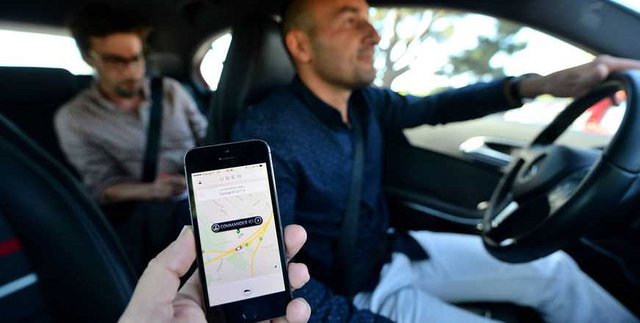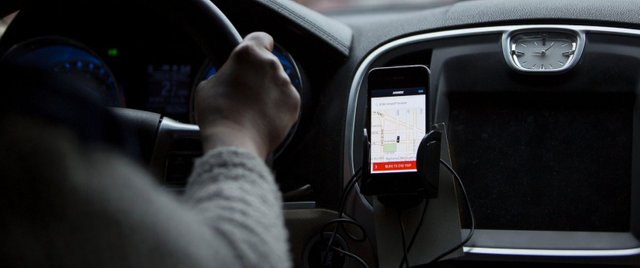



 San Francisco which started thriving in the world after Gold Rush in mid 1800s has now been experiencing tech rush. The gold rush affected many things as people from all over the world flooded to California. They developed new techniques to extract the gold which eventually led to new inventions. And this legacy has been carried forward since then. The Gold Rush was an important factor that led the technology bloom that we are currently experiencing. Most of the time every person you come across in San Francisco is either a coder or a designer.
San Francisco which started thriving in the world after Gold Rush in mid 1800s has now been experiencing tech rush. The gold rush affected many things as people from all over the world flooded to California. They developed new techniques to extract the gold which eventually led to new inventions. And this legacy has been carried forward since then. The Gold Rush was an important factor that led the technology bloom that we are currently experiencing. Most of the time every person you come across in San Francisco is either a coder or a designer.
San Francisco is also inhabited by people just like you and me who neither code nor design but try to find our identity in this vast concrete jungle. There are people who work behind the tech curtains like apps and websites. We believe that technology is increasing our communication. But in reality it is just changing the way we connect. Connectivity and communication are two different ideas that I will look into while sharing the stories of my encounter with the humans that live and work behind the tech wall. Apps help increase the range of ways by which people communicate. These apps often act as mediators to social interactions.
Majority of the transactions that we make do not require any interaction between two parties. These service include movie rentals, customer support and even money transfers. These are some examples of the way that the apps and technology have enhanced our connectivity. I had some problems with my Amazon account so I called their customer care center. The machine answered the call and gave me instructions to follow to resolve my issue. But I ended up speaking to the customer care representative named Sarah who was answering her calls from her home in Miami. This was a merely a connectivity. There are some services that focus not just on connectivity but also on communication. On-demand delivery services, ride sharing apps etc. These humans though are behind the app until requested for services have a special privilege than the latter one. They not only get a chance to offer personalized services to their clients but also interact with people from different social backgrounds and nationalities in such a cosmopolitan city like San Francisco. Online apps have transformed the market and initiated a set of work conditions that the workers can tailor themselves.
While I was taking Lyft to my office headquarters for my meeting, I met Rahim who is from Afghanistan. Rahim stated that he loves his job not only because it has a good pay but all these amazing and delightful conversations that he has with people everyday. He admires the way Lyft matches him to riders near his location. As a part-time coder he explained me the algorithm that the Lyft uses to match to the closest rider. The problem to be solved is an optimization problem to which solution is given by a complex algorithm that takes into account the distance, traffic conditions and the driver’s rating. During my 15 minutes trip to headquarters I had a really good conversation about the current situation of Afghanistan and also the efforts of the Nepalese Gurkha troops who in coalition with Afghani government are combating terrorism. Having this conversation about my people with someone thousand miles away from my country certainly made me feel like at home. And in the end he dropped me off with this cheerful “Have a nice day, brother!”.
People like Rahim are the human aspect of these apps. Their social skill is what makes them different from the traditional services. Making it different from traditional services is a driving factor that is vital to thrive in jobs like these. I remember taking taxi from the airport when I first landed in San Francisco. I had heard of ride sharing apps but had never used them. Throughout the whole ride I only spoke to the driver twice. He had his Bluetooth headset on and was avoiding eye contact. Since then the conversation and insightful talk that I have with the drivers in Lyft has been motivation for me to use their services whenever I need to.
I believe apps like these have been able to characterize the nature of the problem of the social interactions that faded amidst the technological advancements. Companies like Lyft and Uber have been able to use creative solutions to the problem while still providing a source of income for people like Rahim who try to find their way through to make some living. Their stories is what inspires me to reflect on the humanity that seems to have been covered by a thick fog of technology. And it helps me realize the power of human interaction in a swift technological drive that we are currently experiencing.
Congratulations @diissiid! You received a personal award!
You can view your badges on your Steem Board and compare to others on the Steem Ranking
Vote for @Steemitboard as a witness to get one more award and increased upvotes!
Downvoting a post can decrease pending rewards and make it less visible. Common reasons:
Submit